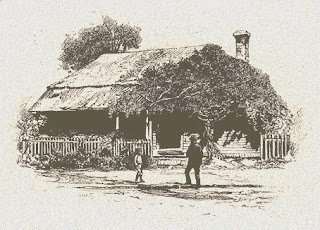The increasing availability of on-line resources has transformed the practice of family history. There are now thousands of people calling themselves genealogists who have never unwrapped a bundle in an archive or trudged hopefully through a graveyard.
A typical on-line service provides customers with instant access to a range of digitised official records and the opportunity to create and publish family trees. The happy intersection of those two modes of business enables them to sell information provided by one client to another when their "search" includes so-called user-generated content.
There is a certain authority attached to a BMD registration, a Census form, or even a passenger list; but how much trust can you place in what I publish online?
Well, not me, obviously. Everything I post is comprehensively researched and impeccably documented. But what about the contributions of mere mortals who are prone to error, to wishful thinking, or just plain fabrication.
These musing were prompted by a return to Mundia after an extended absence. Mundia is an arm of the Ancestry mega-corporation that aims to separate the two major aspects of the family history business model. It enables users to create trees from scratch or upload an existing GEDCOM file, but does not offer direct access to any official records.
Membership of Mundia is free (at least while it is "in beta") because each person who contributes anything to the site is providing stuff for Ancestry to sell through its subscription arms. I have no difficulties with that when the company is completely open about what it does. I do wonder, however, whether their ought to be some requirement for quality control.
Mundia employs the "wiggly green leaf" heavily advertised across Ancestry websites to indicate that its algorithms have identified some additional information about a person in your tree. In essence, the leaf says "Here are some assertions, made by someone you do not know, that have no citations or sources attached to them. Would you like to incorporate them into your file?"
At first glance, the hints may appear to be coming from multiple sources. The same information is being offered from several contributors. Then you realise that, if you accept the hint, your tree will be added to the list vouching for the authenticity of the claim.
So why do I refer to Mundia? Because used carefully, it can provide useful insights. I will not accept a date of birth or a place of burial just because it is offered. I will use that information to refine a search undertaken somewhere else that can turn up real evidence to support the assertion and justify adding it to my database.
But it can be so frustrating. I was reviewing what (little) I know about 3xgreat grandmother Margaret HEATHWOOD (died 1887 aged approximately 49). A search using just that on Mundia identified five potential matches, Four, named Atwood, died in the United States; so the site was working beautifully so far.
Then came the shock.
And even worse, I knew that I had contributed to that mess because I uploaded a fragment of GEDCOM when I was first testing how the site worked.
Of the 19 versions of Margaret's life, 11 assert that she was born in Queensland and 6 that she was born in Co Armagh, Ireland. A seventh site argues for Ireland but apparently confuses Armagh and Fermanagh into Armanagh. And the nineteenth? Well when I uploaded, I could not confirm place of birth (and still cannot) so left it blank.
I understand the reason for the two camps. Margaret's death registration is annotated "** born Queensland aged 49 years" but there is no corresponding birth entry. On the other hand, there is inconclusive evidence of Heathwoods travelling from Armagh to Moreton Bay.
How many of the contributors to Mundia care about, or are even aware of, that uncertainty? And how can I identify those who do, so that I can apply appropriate weight to the value of their work? One way will be to wade through 18 published trees and assess their reliability in other areas.
In the meantime, I simply need to rely upon caveat emptor; which I believe is Latin for "if an aegean offers you an animal without charge, then have a good equine dentist handy".
















